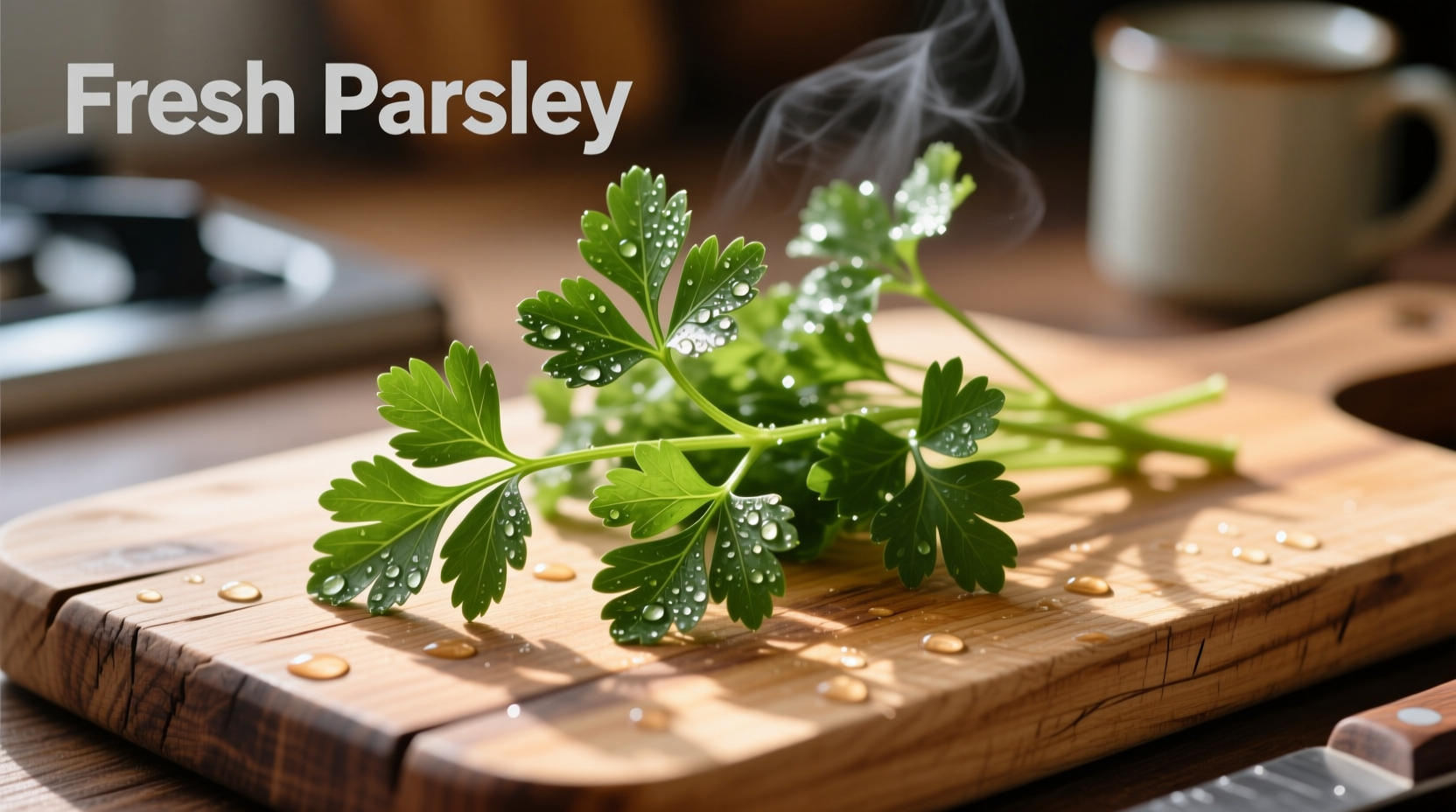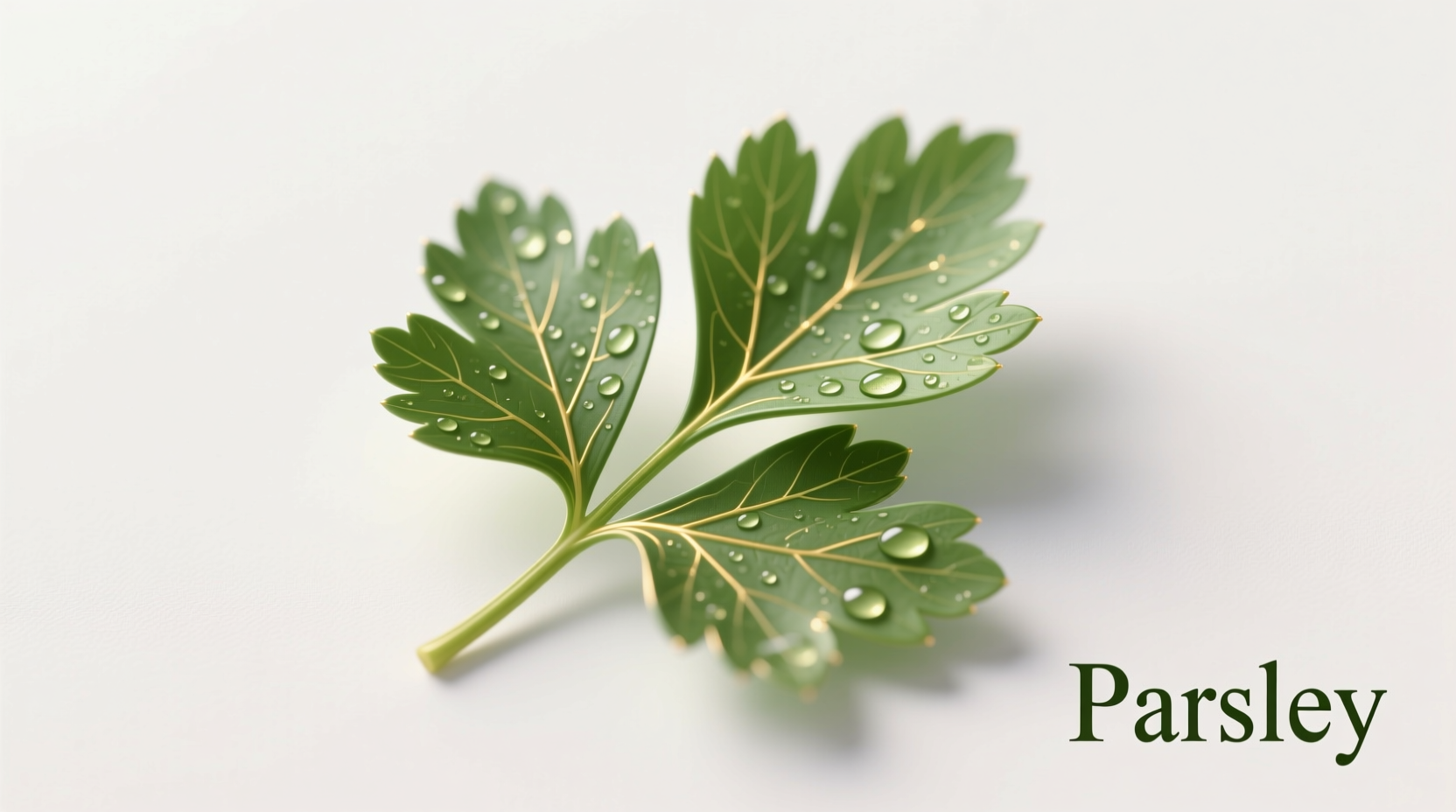Discover why professional chefs consistently choose leaf parsley over other varieties and how you can maximize its culinary potential in everyday cooking. This comprehensive guide reveals practical techniques for selecting, storing, and using this essential herb to elevate your dishes from ordinary to extraordinary.
What Makes Leaf Parsley Different From Other Varieties
Leaf parsley (Petroselinum crispum neapolitanum) stands apart from its curly counterpart with distinctive flat, serrated leaves and a more pronounced herbal flavor. Unlike curly parsley primarily used as garnish, leaf parsley delivers substantial flavor that withstands cooking processes. The difference isn't merely aesthetic—leaf parsley contains higher concentrations of essential oils that provide its characteristic robust taste.
| Characteristic | Leaf Parsley | Curly Parsley |
|---|---|---|
| Leaf Shape | Flat, broad, serrated edges | Crinkled, ruffled appearance |
| Flavor Profile | Stronger, more robust herbal taste | Milder, slightly grassy flavor |
| Culinary Use | Preferred for cooking applications | Mainly used as garnish |
| Texture When Cooked | Holds shape better | Becomes limp more quickly |
| Shelf Life | 3-5 days refrigerated | 5-7 days refrigerated |
Practical Selection and Storage Techniques
Choose vibrant green leaf parsley with crisp stems and no yellowing. Avoid bunches with wilted leaves or dark spots, which indicate age and reduced flavor. For optimal freshness, treat parsley like cut flowers: trim the stems, place in a glass with an inch of water, and cover loosely with a plastic bag before refrigerating. This method extends freshness up to two weeks—significantly longer than standard storage approaches.
When preparing leaf parsley, wash gently in cold water to preserve delicate leaves. Shake off excess moisture or use a salad spinner, then pat dry with paper towels. Remove thick stems before chopping, as they can be fibrous and bitter. For maximum flavor release, chop leaf parsley just before adding to dishes rather than using pre-chopped varieties.

Culinary Applications That Showcase Leaf Parsley's Strengths
Leaf parsley shines in dishes where its robust flavor can enhance rather than disappear. Incorporate it into:
- Persillade: Finely chop with garlic for a flavor base in French cuisine
- Gremolata: Combine with lemon zest and garlic for osso buco and braised dishes
- Chimichurri: Blend with vinegar, oil, and red pepper flakes for grilled meats
- Tabbouleh: Use as the primary herb in this Middle Eastern salad
- Pasta sauces: Add to tomato-based sauces during the last minute of cooking
Unlike curly parsley, leaf parsley maintains its integrity when cooked, making it ideal for soups, stews, and braises. Add it during the final 5-10 minutes of cooking to preserve both flavor and color. For raw applications like salads and salsas, leaf parsley provides a more substantial texture that doesn't wilt immediately.
Nutritional Profile Backed by Scientific Research
According to USDA FoodData Central, a quarter-cup (10g) serving of fresh leaf parsley delivers remarkable nutritional benefits:
- Over 100% of your daily vitamin K requirement
- Nearly 15% of daily vitamin C needs
- Significant amounts of vitamin A and folate
- Antioxidants including flavonoids and carotenoids
Research published in the Journal of Agricultural and Food Chemistry confirms that leaf parsley contains higher concentrations of apiol and myristicin—compounds with potential anti-inflammatory properties—compared to curly varieties. These compounds remain stable during cooking, making leaf parsley valuable both raw and cooked.
Growing Leaf Parsley Successfully at Home
Leaf parsley thrives in containers or garden beds with these simple requirements:
- Light: 4-6 hours of direct sunlight daily
- Soil: Well-draining potting mix with pH 6.0-7.0
- Watering: Keep soil consistently moist but not soggy
- Harvesting: Cut outer stems first to encourage new growth
Start seeds indoors 8-10 weeks before last frost or purchase established plants. Unlike many herbs, parsley grows slowly at first but develops a deep taproot that makes it relatively drought-tolerant once established. For continuous harvest, plant new seeds every 4-6 weeks throughout the growing season.
When Leaf Parsley Isn't the Right Choice
While versatile, leaf parsley has specific limitations. Avoid using it:
- As a primary garnish where visual appeal matters most
- In dishes requiring extremely delicate herb flavors
- When substituting for herbs with completely different flavor profiles
- In recipes specifically calling for curly parsley's milder taste
Understanding these context boundaries prevents culinary missteps. For garnishing, curly parsley's ruffled appearance creates more visual interest. For extremely delicate dishes like consommé, chervil or chives might provide better flavor balance.
Effective Substitutions When Leaf Parsley Isn't Available
When you need a leaf parsley alternative, consider these options based on your specific recipe requirements:
- Cilantro: Similar texture but distinct flavor (best for Latin/Asian dishes)
- Italian parsley stems: Finely minced for flavor base in sauces
- Celery leaves: Milder flavor but similar texture (good for soups)
- Arugula: Peppery alternative for salads and raw applications
Remember that no substitution perfectly replicates leaf parsley's unique flavor profile. When possible, adjust quantities based on the substitute's intensity—typically using 25-50% more of milder alternatives.











 浙公网安备
33010002000092号
浙公网安备
33010002000092号 浙B2-20120091-4
浙B2-20120091-4